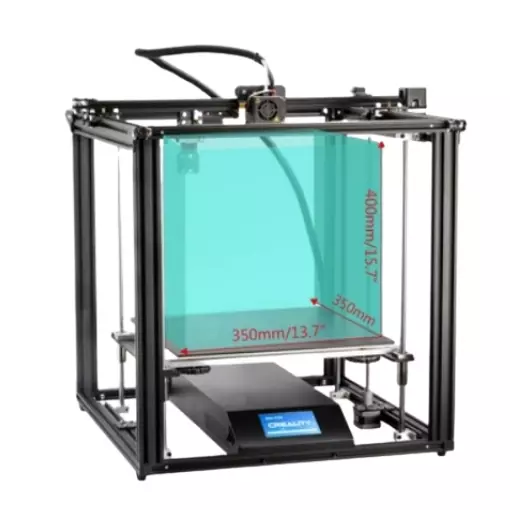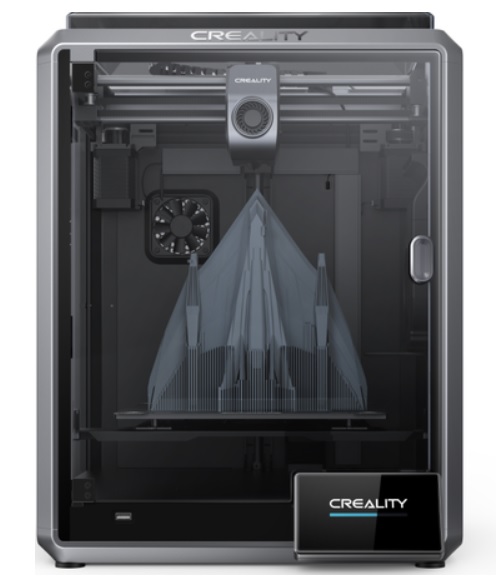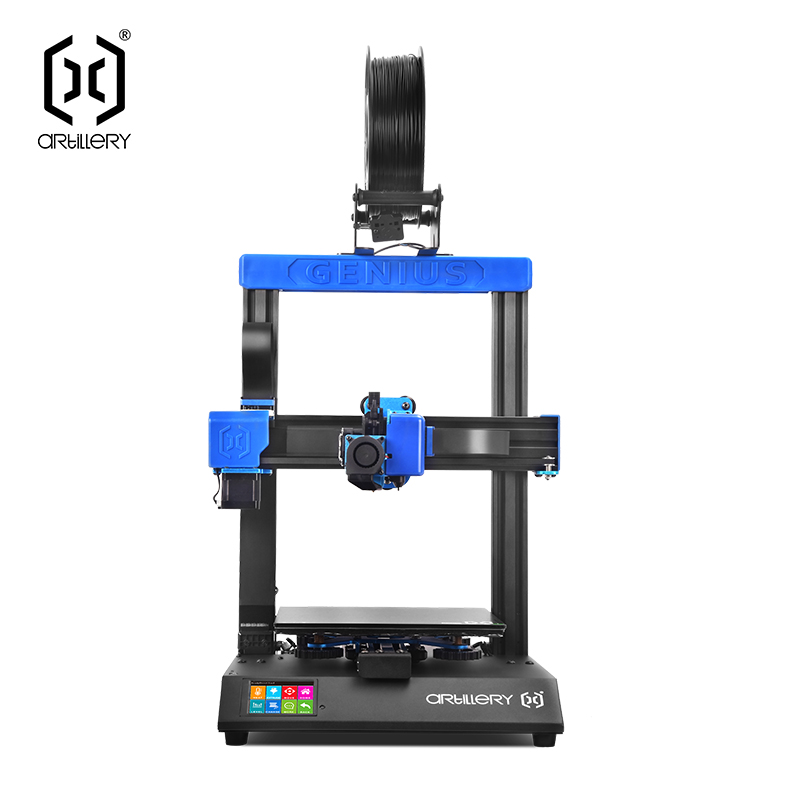Compare Ender 5 Plus vs K1 vs Genius Pro
Comparison between the best 3D printers
Choose the best 3D printer at the best price. The cheapest 3D printers are here.
Buy a 3D printer here with 3D Fila.
 |
 |
 |
|
| Model | Ender 5 Plus[BUY Ender 5 Plus] |
K1[BUY K1] |
Genius Pro[BUY Genius Pro] |
| Printing Material | Filament | Filament | Filament |
| Estimated price | $599,00 | $399,00 | $309,00 |
| Fabricante | Creality 3D | Creality 3D | Artillery |
| Release Year | 2019 | 2023 | 2022 |
| Print Volume [mm] | 350x350x400 | 220x220x250 | 220x220x250 |
| Printer Size [mm] | 632x619x666 | 355x355x480 | 430x390x590 |
| Weight [kg] | 18,2 | 12,5 | 9,6 |
| Power Loss Recovery | YES | YES | YES |
| Enclosed printer | NO | YES | NO |
| Bed Leveling | Automatic | Automatic | Automatic |
| Filament End Sensor | YES | YES | YES |
| Bed type | Heated | Heated | Heated |
| Power supply system | Bowden | Direct Drive | Direct Drive |
| Standard nozzle | 0,4 | 0,4 | 0,4 |
| Maximum Nozzle Temperature [°C] | 260 | 300 | 240 |
| Maximum Bed Temperature [°C] | 100 | 120 | 120 |
| Maximum printing speed [mm/s] | 180 | 600 | 150 |
| Filament holder | YES | YES | YES |
| Camera for supervision | NO | NO | NO |
| Recommended filaments | PLA, TPU, ABS, PETG | ABS, PLA, PETG, PET, TPU, PA, ABS, ASA, PC, PLA-CF, PA-CF, PET-CF | PLA, PETG, Tritan, Flex, ABS |
| Recommended slicers | Cura, Simplify, Slic3r | Creality Print; Cura, Simplify3D e PrusaSlicer | Cura, Simplify, Slic3r, IdeaMaker |
| Maximum Resolution [mm] | 0,1 | 0,1 | 0,1 |
| Processor | 32 bits | Ruby 32bit | |
| Display | Touchscreen TFT 4,3'' | Display touchscreen 4,3'' | Touchscreen TFT 3,5'' |
| Power Supply | 24V / 504W | 110/220V / 350W | |
| Connectivity | SD / USB | Ethernet / USB / Wi-Fi | SD / USB |
| Operating systems | Windows, Mac, Linux | Windows, Mac, Linux | Windows, Mac, Linux |
| Date of registration in the system | 2021-04-14 | 2023-04-17 | 2022-11-07 |
| Release date | 2019 | 2023 | 2022 |
| Extra features | The Ender 5 Plus offers a large print volume (350x350x400 mm) and fast assembly. It includes a BLTouch sensor, but with range limitations. It stands out for its dimensional accuracy, although it requires adjustments to the slicer settings. Despite the noise, its integrated design saves space, and includes features such as a filament sensor and power resumption. Ideal for large projects, it requires refinement in the settings for high-quality prints. | The K1 is an extremely fast FDM 3D printer, reaching 600mm/s, 12 times faster than standard models. Equipped with a Core XY system and lightweight print head, it offers energy efficiency and high print quality. It stands out for its dual-gear extruder and quickly heated hotend, as well as dual cooling to prevent warping. Its robust structure ensures stability at high speed, with optimized software to speed up the printing process. | The Artillery Genius Pro is a standout 3D printer with a fast-heating AC tempered glass print bed and a sleek design with a black aluminum base and blue accents. It features a Titan-style direct extruder and a 32-bit Ruby mainboard. Despite its advanced feature set, it struggles to maintain print quality, requiring frequent adjustments and calibrations, and its glued glass bed makes cleaning and replacement difficult. |
| Support for multiple colors and materials (AMS and CFS) | NO | NO | NO |
Notes * |
|||
| Cost-benefit | 6 / 10 | 8 / 10 | 7 / 10 |
| Hardware | 2 / 10 | 4.8 / 10 | 2.8 / 10 |
| Screen | . | . | . |
| Print volume | 4 / 10 | 3 / 10 | 3 / 10 |
| Performance | 1 / 10 | 5 / 10 | 1 / 10 |
| [BUY Ender 5 Plus] | [BUY K1] | [BUY Genius Pro] |
Conclusion |
| In comparing the Ender 5 Plus, K1, and Genius Pro 3D printers, it's clear that each model caters to different user needs and budgets. The **Ender 5 Plus**, while the most expensive of the trio, offers a substantial print volume and solid dimensional accuracy, making it a suitable choice for those with larger projects in mind. Its features, like power loss recovery and a filament sensor, are beneficial, but it may require additional tuning for optimal performance. The build quality is robust, but potential buyers should be cautious of noise levels during operation. On the other hand, the **K1** stands out for its exceptional speed and efficiency, being able to print at a maximum speed of 600mm/s. Its advanced Core XY system, coupled with a dual-gear extruder, positions it well for users looking for quick turnarounds without compromising on quality. The K1's innovative design minimizes warping, which enhances overall print reliability, making it a strong candidate for serious hobbyists and professional applications alike. Finally, the **Genius Pro**, priced affordably, might appeal to users looking for entry-level options without sacrificing essential features. Despite its sleek design and good specifications, this printer has challenges with print quality that may require ongoing adjustments. The need for regular calibration and maintenance could be a drawback for beginners or those seeking a more hassle-free experience. In conclusion, the **best choice** ultimately hinges on specific user needs: if maximum print volume and accuracy are paramount, the Ender 5 Plus is ideal; for speed and efficiency, the K1 takes the lead; and for a balance of affordability and features, the Genius Pro offers an entry point, albeit with some compromises in performance. Users should assess their priorities—be it speed, print size, or budget—to make the most informed decision among these three capable 3D printers. |

